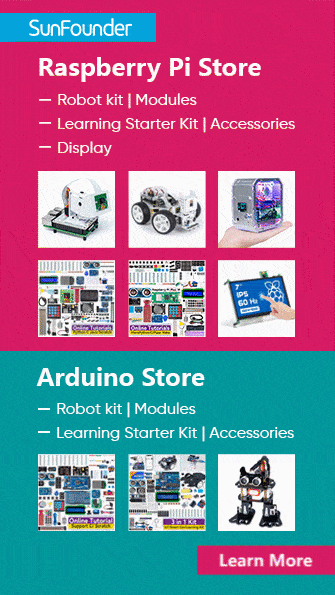Secure remote access to your Raspberry Pi opens up a world of possibilities for managing and interacting with your device from anywhere in the world. Whether you're a hobbyist tinkering with home automation or a professional overseeing IoT deployments, the ability to remotely control your Raspberry Pi is invaluable. This guide will walk you through the necessary steps to set up secure remote access without delving too deeply into complex configurations.
In today's interconnected world, having remote access to your devices can significantly enhance productivity and convenience. For Raspberry Pi users, this means being able to manage projects, troubleshoot issues, and monitor systems from afar. However, setting up such access requires careful consideration of security measures to protect your device from unauthorized access. Below, we explore various methods and tools that make remote access both simple and secure.
Setting Up Your Raspberry Pi for Remote Control
Using a Raspberry Pi as a networked KVM (Keyboard, Video, Mouse) unit allows you to send the display output of a remote host, such as your home laptop, directly to your Raspberry Pi. This setup is particularly useful for controlling multiple machines from one central location. By configuring your Raspberry Pi correctly, you can stream the desktop environment of another computer, making it feel like you're sitting right in front of it.
This functionality is achieved by leveraging software solutions that enable screen sharing and input redirection. These tools facilitate seamless interaction between the Raspberry Pi and the target machine, ensuring that commands issued on the Pi are executed on the connected device. Additionally, this method supports high-definition video streaming, providing a responsive and clear visual experience.
For beginners, starting with basic tutorials and gradually advancing to more complex setups can help familiarize yourself with the technology. As you gain confidence, you can experiment with different configurations to optimize performance based on your specific needs and hardware capabilities.
Exploring Methods for Remote Access
There are several methods available for establishing remote access to your Raspberry Pi, each catering to different user preferences and technical requirements. One popular option involves using a web browser on any Internet-connected computer to visit the Connect Web Portal. By signing in with your Raspberry Pi ID, you can initiate a secure session that grants you access to your device’s interface.
Among the most widely used techniques are SSH (Secure Shell), VNC (Virtual Network Computing), and Raspberry Pi Connect. SSH provides command-line access, allowing users to execute scripts and manage files remotely. VNC, on the other hand, offers graphical access, enabling full interaction with the desktop environment. Raspberry Pi Connect simplifies the process further by integrating these functionalities into an easy-to-use platform.
Each method has its own advantages and limitations, so choosing the right one depends on factors such as intended use, desired level of security, and ease of setup. Beginners may find Raspberry Pi Connect particularly appealing due to its user-friendly design and minimal configuration requirements.
Securing Connections Beyond Local Networks
Connecting to a Raspberry Pi located behind a NAT router or firewall over the Internet poses unique challenges but is entirely feasible with the right approach. Utilizing SSH is a common solution, as it encrypts all data transmitted between your local machine and the remote Raspberry Pi, ensuring privacy and security.
To establish this connection, you'll need to configure your router to forward incoming SSH traffic to the Raspberry Pi's local IP address. Additionally, setting up a static IP for your Pi ensures consistency in connectivity, reducing the likelihood of disruptions caused by dynamic IP assignments.
For those seeking even greater simplicity, services like ngrok or PageKite can be employed to create temporary public URLs that route traffic to your private network. These tools eliminate the need for manual port forwarding while maintaining a secure channel for communication.
Extending Reach Through Remote Desktop Solutions
Remote desktop applications offer another avenue for accessing your Raspberry Pi from afar. Programs like RealVNC or TightVNC allow you to view and interact with your Pi's desktop environment as if you were physically present. This capability is especially beneficial when performing tasks that require graphical interfaces or detailed monitoring.
Implementing remote desktop solutions typically involves installing client-server software on both the Raspberry Pi and the accessing device. Once configured, initiating a connection usually entails entering the Pi's hostname or IP address along with login credentials.
While convenient, it's crucial to implement robust authentication mechanisms to safeguard against unauthorized access. Enabling two-factor authentication and regularly updating passwords contribute to enhancing overall system security.
Alternative Approaches for Internet-Based Connectivity
Beyond traditional methods, exploring alternative approaches can provide additional flexibility in accessing your Raspberry Pi over the Internet. For instance, employing cloud-based platforms designed specifically for IoT management enables centralized control of multiple devices simultaneously.
These platforms often include features such as automated updates, real-time analytics, and customizable dashboards, empowering users to efficiently oversee their networks. Furthermore, they frequently incorporate advanced encryption protocols to protect sensitive information during transmission.
Investigating these options alongside conventional methods allows you to select the best combination of tools tailored to your particular situation, balancing convenience with security considerations.

